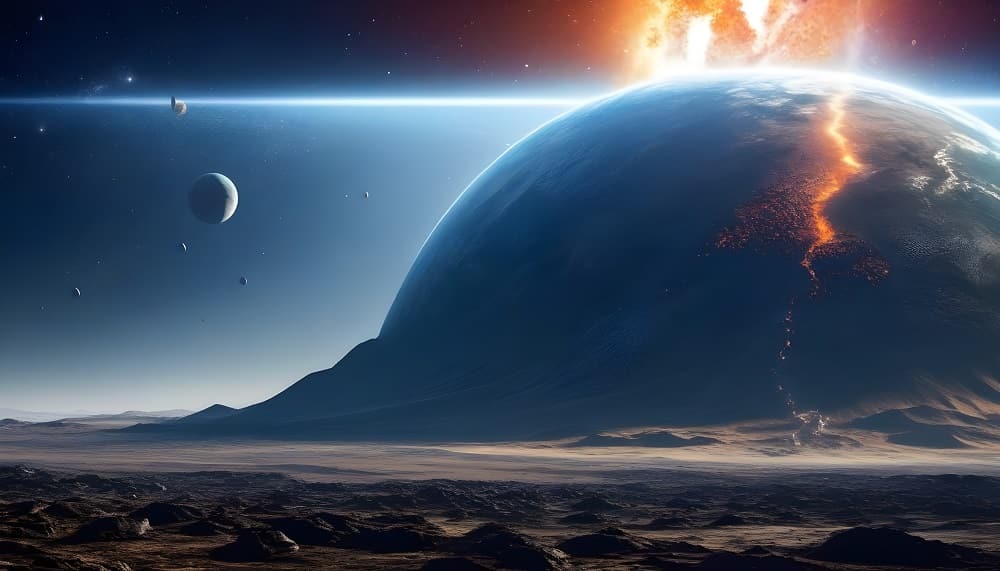The Earth's history is marked by several pivotal moments, and among them, mass extinction events stand out as turning points that shaped the course of evolution. One of the earliest of these cataclysmic events occurred millions of years ago, leaving behind a trail of mysteries that scientists are still unraveling. In this exploration, we delve into the enigmatic details of Earth's first mass extinction event, seeking to decode the ancient secrets that transformed the planet's biosphere.
Around 445 million years in the past, life confronted a monumental challenge when the Earth's climate began a chilling transformation, leading to dire consequences. The seas, over time, succumbed to freezing temperatures, spelling doom for creatures inhabiting the warm expanses of the planet. Once vibrant shallow seas morphed into frigid tombs, marking the inception of the world's inaugural mass extinction event. The pivotal occurrence during this epoch was a staggering 60 percent reduction in carbon dioxide levels, a crucial greenhouse gas essential for Earth's warmth.
The absence of this vital gas triggered a global ice age, spanning approximately 2 lakh years. In its most severe phase, nearly half of the world lay beneath ice, resulting in the obliteration of 85 percent of life forms. The annihilation extended to nearly all ancient organisms, erasing them forever from the intricate tapestry of the world's evolutionary history. The disappearance of shallow seas in warmer regions left behind only a handful of resilient creatures capable of enduring the depths of the ocean.
This first mass extinction event in Earth's history is known as the Ordovician-Silurian extinction, ranks among the "Big Five" mass extinctions, and is believed to have wiped out a significant portion of marine life. This event marked the boundary between the Ordovician and Silurian periods during the Paleozoic Era. The cause of this extinction is believed to be related to a combination of glaciation and changes in sea levels.
Causative Factors
The exact causes of the Ordovician-Silurian Extinction remain elusive, but researchers propose a combination of factors. Climate change, glaciation, sea level fluctuations, and volcanic activity are all considered potential contributors. Understanding the interplay of these factors is crucial in deciphering the complex chain of events that led to the mass die-off.
Impact on Marine Life
During the Ordovician period, the Earth experienced significant glaciation, leading to a drop in sea levels. This environmental change had a profound impact on marine life, particularly organisms living in shallow seas. The majority of the extinction's impact was felt in the oceans, where diverse marine species, including trilobites, brachiopods, and graptolites, faced significant declines. The drop in sea levels caused habitat loss and a decline in the diversity of marine ecosystems. The loss of these species left vacant ecological niches that paved the way for the evolution of new life forms in the subsequent Silurian period.
Biotic Recovery
Following the extinction event, Earth underwent a period of biotic recovery. New species emerged to fill ecological roles left vacant by the extinct organisms, leading to the diversification of marine life. Understanding the mechanisms of this recovery sheds light on the resilience of life on our planet and its capacity for adaptation in the face of catastrophic events.
Global Significance
The Ordovician-Silurian Extinction wasn't confined to a specific region; its impact reverberated globally. Studying its traces in different geological formations worldwide helps scientists create a comprehensive picture of the Earth's conditions during that critical period.
Additionally, the glaciation process contributed to changes in ocean chemistry and circulation, affecting marine life further. The combination of these factors led to a substantial decrease in biodiversity, making the Ordovician-Silurian extinction one of the most severe mass extinction events in Earth's history.
Despite the significant impact on marine life, some organisms, such as jawed fishes, were able to survive and adapt to the changing conditions. Over time, life rebounded, and new species emerged during the Silurian period, marking the beginning of a new chapter in the evolutionary history of life on Earth.













0 comments:
Post a Comment